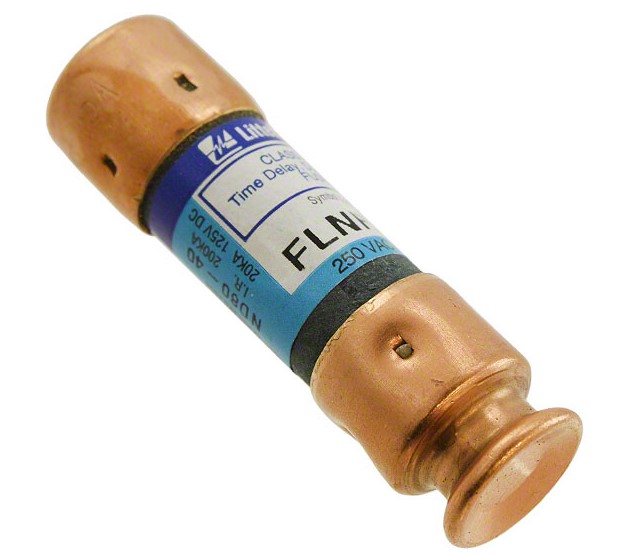It is important to know the differences between the two types of fuses, flnr and frn-r, in order to safely and effectively protect electrical circuits. In this blog post, we will discuss the key differences between these two types of fuses, including their ratings, construction, and their respective applications.
Overview of fuses
Fuses are an important safety device used to protect electrical circuits from damage due to overload. There are two main types of fuses: FLNR and FRN-R.
The main difference between the two is in their construction and the amount of current they are able to handle. FLNR fuses are made from a metal strip with a wire mesh center. They are designed to handle higher current levels than FRN-R fuses, which are made from a metal strip with a fiberglass center.
FLNR fuses are also more resistant to vibration and shock, making them a better choice for areas with high levels of activity. FRN-R fuses, on the other hand, are more economical and are often used in applications where cost is a factor.
Components of fuses
Fuses are an essential component of electrical systems, and the choice of fuse type is an important decision when it comes to safety and performance. Two popular types of fuse are flnr and frn-r. Although similar in appearance, there are some key differences between these two types of fuse.
Although similar in appearance, there are some key differences between these two types of fuse. Flnr fuses are made of metal and contain a thin strip of metal that melts when the current passing through it exceeds the fuse’s rating. In contrast, frn-r fuses are made of a ceramic material and contain a bimetallic strip that bends when the current is too high.
This bending action breaks the circuit and trips the fuse. As a result, flnr fuses are less sensitive to variations in current and can handle larger current loads than frn-r fuses. However, they are also slower to react to overloads.
Ultimately, the best choice of fuse depends on the requirements of the electrical system.
Types of fuses
Fuses are an important part of any electrical system, and understanding the difference between types of fuses is essential for keeping your wiring safe. Two of the most common types of fuses found in electric systems are FLNR and FRN-R fuses.
FLNR fuses are fast-acting, meaning they will trip almost immediately when a short circuit or overload occurs. This makes them a great choice for protecting sensitive devices like computers, phones, and home entertainment systems.
FRN-R fuses, on the other hand, are slow-blow fuses, which means they will allow a small amount of current to pass through before tripping. This makes them ideal for protecting motors and other large appliances, as their slower reaction time allows them to handle the inrush of current that occurs when motors start up without tripping.
Differences between flnr and frn-r fuses
When it comes to electrical protection, two of the most widely used fuses are FLNR and FRN-R. While both may appear to have similar functions, there are some key differences between the two that set them apart. FLNR, or Fusible Low-Peak Non-Renewable, fuses are designed to protect circuits from short-circuit and overload currents.
FLNR, or Fusible Low-Peak Non-Renewable, fuses are designed to protect circuits from short-circuit and overload currents. They are a one-time use fuse, meaning they must be replaced after an overload or short circuit. On the other hand, FRN-R, or Fusible Renewable Non-Renewable, fuses are designed to be re-useable.
They are also capable of protecting circuits from short-circuit and overload currents, and can be reset after an overload or short circuit. The main difference between the two fuses is that FLNR fuses are one-time use, while FRN-R fuses are re-useable.
Advantages and disadvantages of each
When it comes to electrical protection, two of the most common fuses are FLNR and FRN-R fuses. Both offer very similar protection, but there are a few key differences between them. The FLNR fuse is designed to protect against short circuits and overloads, while the FRN-R fuse is designed to protect against both short circuits and overvoltages.
While both offer the same level of protection, they each have their own advantages and disadvantages. The FLNR fuse is designed to protect against short circuits, so it is typically used in applications that require very high levels of protection.
It is also less expensive than the FRN-R fuse. However, it is not designed to protect against overvoltages, so it is not suitable for applications that require protection from power surges or other high voltage events.
It is more expensive than the FLNR fuse, but its ability to handle both high and low voltage events makes it the safer option for applications that require protection from both short circuits and overvoltages. It is also more reliable than the FLNR fuse, as it is designed to trip more quickly than the FLNR fuse in the event of an overload.
In conclusion, both the FLNR and FRN-R fuses offer the same level of protection, but each has its own advantages and disadvantages. The FLNR fuse is typically less expensive, but it is not designed to protect against overvoltages. The FRN-R fuse is more expensive, but it is better equipped to handle both high and low voltage events. Ultimately, it is up to the user to decide which fuse is best suited for their application.
Conclusion
In conclusion, the main difference between FLNR and FRN-R fuses is that FLNR fuses are designed to protect electrical circuits from overloads and short circuits, while FRN-R fuses are designed to protect against both overloads and short circuits and also provide protection against arc faults. Both types of fuses are available in a variety of sizes and ratings, so it is important to choose the right fuse for your specific application.

